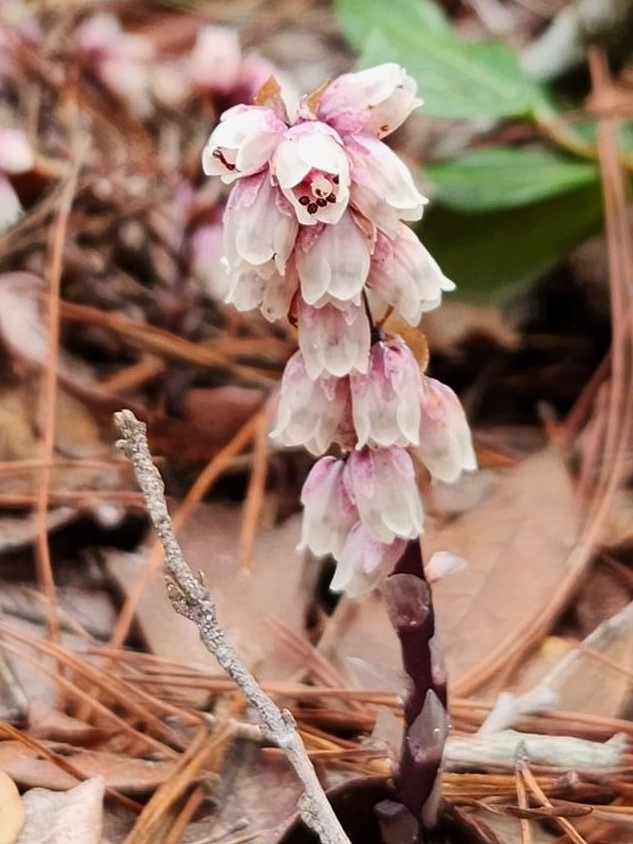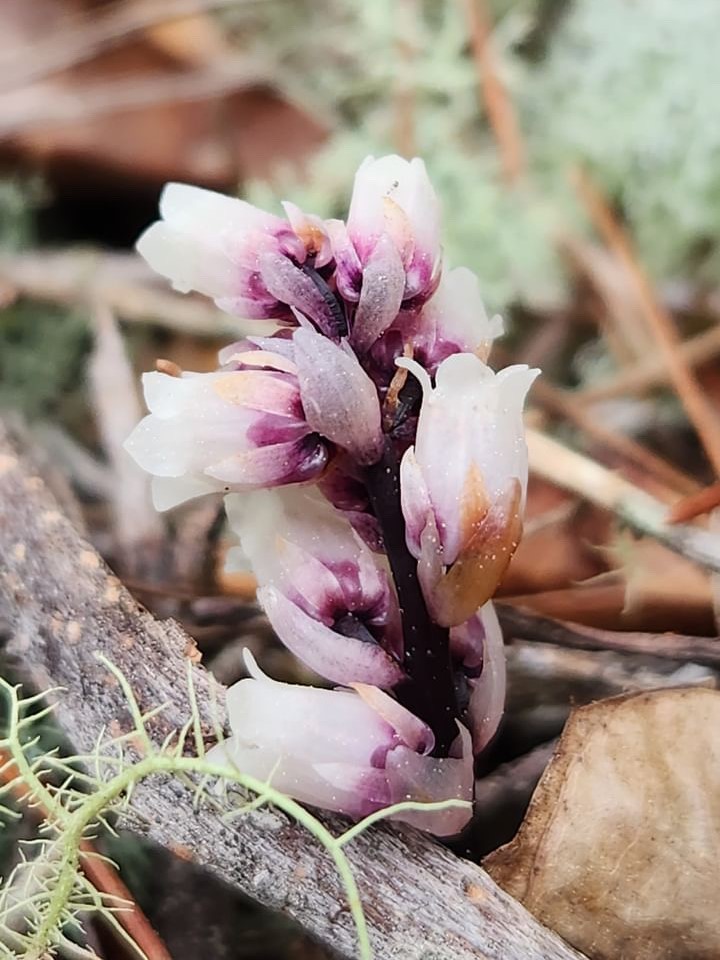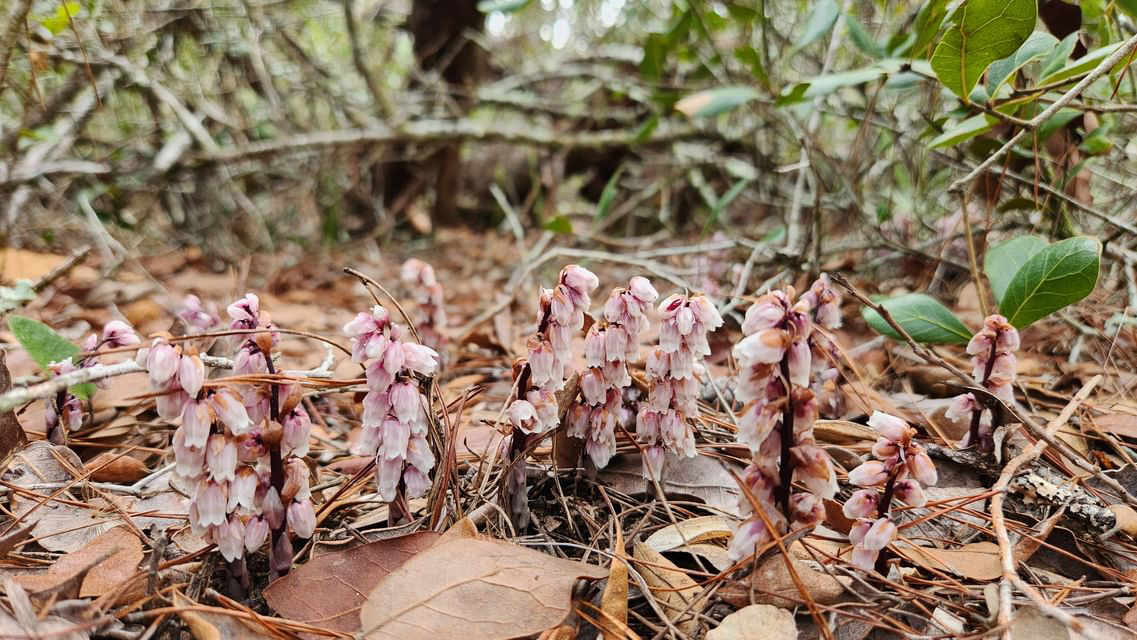Pygmy pipes
Pictured above: Pygmy pipes (Monotropsis reynoldsiae) by Blayre. Click on terms for botanical definitions. View post as a PDF.
Winter brings some very interesting blooms to North Central Florida’s hardwood hammocks, including the quite cryptic Pygmy pipes (Monotropsis reynoldsiae). With only around 10 populations currently known, this narrow range endemic species is listed as state-endangered. Like its relative, Indianpipe (Monotropa uniflora), Pigmy pipes are non-photosynthetic and do not contain chlorophyll. They are a myco-heterotrophic species and attain nutrition by parasitizing underground fungi that are mycorrhizal with trees. As such, they are closely associated with Dogwood (Cornus florida) and a number of oak (Quercus sp.) species.
Pigmy pipes have dull white to deep maroon stems adorned with small whitish scale-like leaves that spiral around the bottom quarter to half of the stem. The upper portion of the stem bears numerous bell-shaped nodding white to pink or lavender flowers. Because they are low-growing and emerge within the leaf litter of the forest floor, Pygmy pipes are well camouflaged.


The species epithet reynoldsiae was given in recognition of Mary C Reynolds, the first to enter this species into the botanical record upon finding a population near St. Augustine in December 1884. Monotropsis reynoldsiae has been historically confused with or even lumped in with Common pygmy pipes (Monotropsis odorata), which are found throughout the Southeast, but research has confirmed that it is a morphologically and genetically distinct species.
Family: Ericaceae (Heath, azalea or blueberry family)
Native range: Vouchered in St. Johns, Volusia, Marion, Citrus, Hernando and Pasco counties
To see where natural populations of Pygmy pipes have been vouchered, visit florida.plantatlas.usf.edu.
Hardiness: Zones 9B-10A
Lifespan: Perennial
Soil: Dry to moderately dry soils
Exposure: Shade
Growth habit: Up to 5 inches
Pygmy pipes are not commercially available. Visit a natural area to see them.

